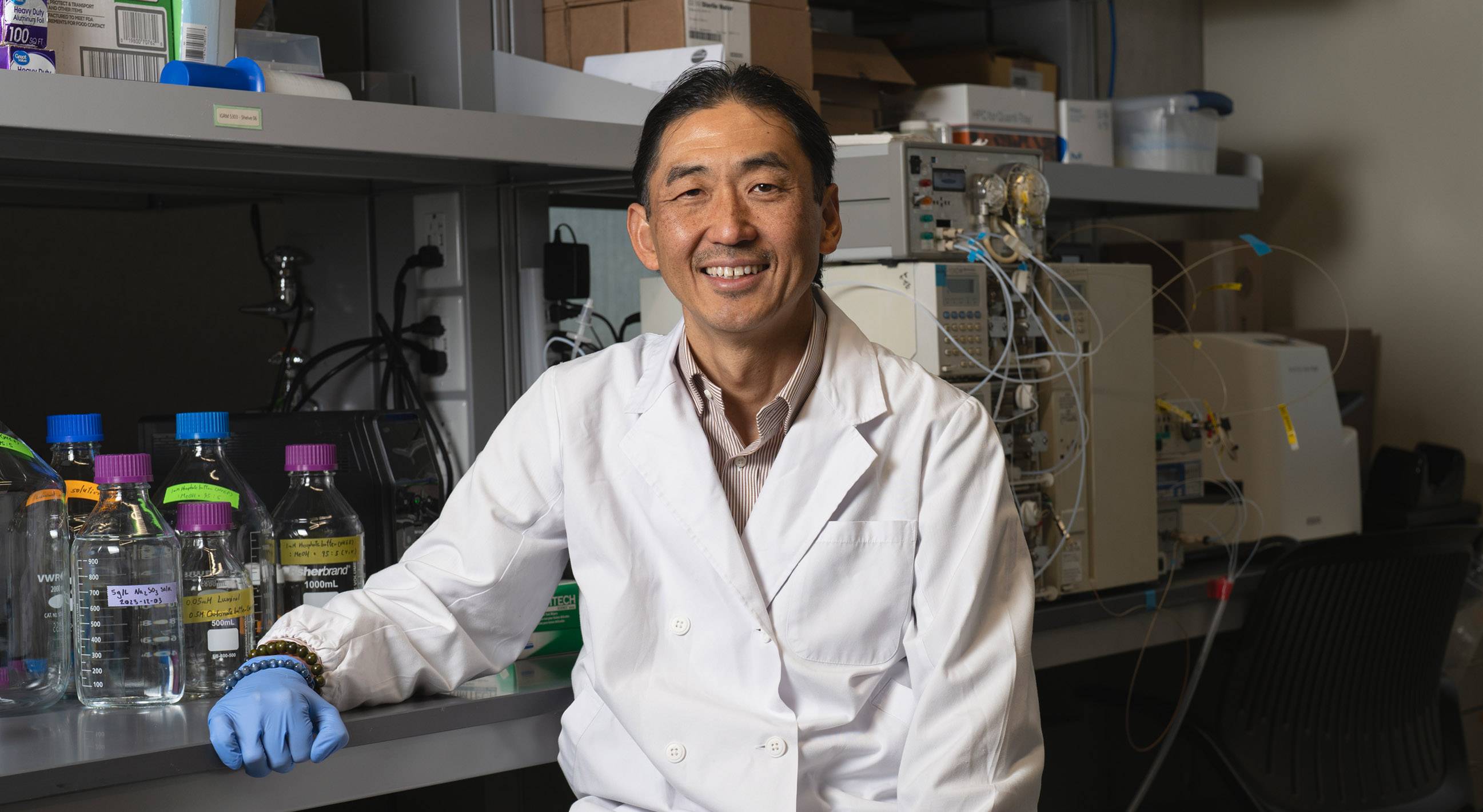Sipping Sustainably
A TXST pilot project converts sewage into drinking water
By Jeremy Thomas and Matt Joyce

Keisuke Ikehata doesn’t blink when drinking a glass of water from the advanced water purification system at the San Marcos Wastewater Treatment Plant.
Yes, his glass contains treated sewage. But after a rigorous purification process, the water is clear, odor-free, and tasty. What’s more, Ikehata contends, this water represents a crucial part of Texas’ effort to meet the challenges of a booming population and strained water supplies.
“It’s getting harder for water utilities to find water resources to tap into, but we can’t say, ‘Oh no! We ran out of water in Texas, please don’t come here,’” says Dr. Ikehata, a Texas State University assistant professor of civil engineering.
Ikehata and his graduate students designed and built the pilot-scale advanced water purification system in 2021 and 2022, funded partly by a $150,000 grant from the U.S. Bureau of Reclamation’s Desalination and Water Purification Research Pitch to Pilot Program.
Since the pilot project came online in 2023, the researchers have been studying various aspects of “direct potable reuse,” which is the use of reclaimed wastewater for municipal drinking water.
Their goals are to prove the technical feasibility of such a system; to develop online water quality monitoring to ensure the safety of purified wastewater; and to prove that purified wastewater is safe and tasty. The team has given multiple conference presentations and is publishing numerous papers along the way.
Ikehata says his vision is to achieve a closed-loop water cycle in which water used by homes and businesses stays within the municipal water system for reuse. “By implementing a closed-loop, direct potable water reuse approach, we can conserve our natural resources and protect our environment while enjoying our economic and technological development sustainably,” he explains. “No water withdrawal from our rivers, lakes, or aquifers, and no wastewater discharge into our rivers, lakes, and gulf.”
The San Marcos wastewater plant discharges more than 5 million gallons of treated wastewater daily. Most of it flows into the San Marcos River, and a fraction is set aside for irrigation and industrial uses. While the water is safe for wildlife and the environment, it has too much nitrate, dissolved solids, and pathogens to meet drinking water standards.
When asked if the San Marcos plant would consider implementing a direct potable reuse system, plant officials said it will likely be a necessity to meet future drinking water demands. Direct potable reuse is in the region’s long-range water plan, coming online around 2050, says Paul Kite, assistant director of utilities for water and wastewater for San Marcos. “If we can take reclaimed water and clean it a bit more to make it direct potable reuse, certainly we would be willing to explore that option as a city,” he says. “There is no doubt about it.”
Ikehata’s advanced treatment system puts the treated wastewater through microfiltration, reverse osmosis, ultraviolet disinfection, and advanced oxidation to remove all impurities. “It’s just as clean as distilled water that you buy from the store,” Ikehata says.
“But public perception is one of the biggest hurdles.”
Ikehata’s research aims to address people’s reservations by both proving that it’s odor-free and tasty while also creating online monitoring systems to prove its safety.
“We need to bring the progress of ours and other wastewater treatment projects to the public’s attention and change their perspective of wastewater being just smelly and dirty,” says Khan Rasha, a graduate student working with Ikehata.
Another challenge of direct potable reuse is the cost. Direct potable reuse water costs $2 to $3 per 1,000 gallons, which is twice the cost of treated surface water from municipal plants that draw water from rivers or lakes. However, direct water reuse is less expensive than seawater desalination plants, which remove salt from seawater to create drinking water.
“When you think about it, $2 to $3 per 1,000 gallons is way cheaper than buying water from Costco and Walmart,” Ikehata says. ★